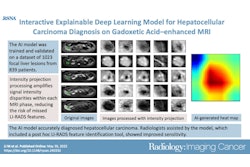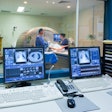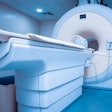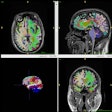Longitudinal contrast-enhanced MRI-based radiomics may soon predict long-term response in treating hepatocellular carcinoma (HCC), a common type of liver cancer, with drug-eluting beads transarterial chemoembolization (DEB-TACE), according to new research published August 19 in Cancer Imaging.
Led by Mark Wielpütz, MD, and Osman Öcal, MD, both from the University Hospital of Heidelberg in Germany, researchers observed tumor changes after DEB-TACE using an integrated model they developed from standardized longitudinal contrast-enhanced (CE)-MRI data, quantitative radiomic features, multimodal deep-learning features, and machine-learning techniques. Abdominal radiologists contributed.
The work is important because "while some patients respond well to DEB-TACE and exhibit significant tumor reduction after a single procedure, others may experience limited treatment effects, leading to resistance and tumor progression," Wielpütz and colleagues explained.
Tumor response assessment is essential for optimizing treatment strategies, and this study is among the first to use longitudinal CE-MRI data with radiomics and [deep-learning] feature analysis, according to the team.
To that end, they assessed their Siamese network model's predictive performance in the evaluation of 202 HCC patients (median age, 63) treated with DEB-TACE from 2004 to 2023. Researchers studied a training cohort (n = 141) and a validation cohort (n = 61) as part of the study.
All MRI scans were performed on 1.5- or 3-tesla MR scanners (Siemens Healthineers). Participants underwent MR imaging first within two months before the DEB-TACE procedure, again within two months after DEB-TACE, and finally three months after the second exam to evaluate tumor response.
Based on the third CE-MRI assessment, 35 patients (17.3%) achieved complete response, 88 (43.6%) showed partial response, 62 (30.7%) demonstrated stable disease, and 17 (8.4%) exhibited progressive disease according to the mRECIST criteria, the authors noted.
Variations in imaging protocols across different scanners were addressed by applying a standardized preprocessing pipeline, they added. In total, 7,182 radiomics features and 4,096 deep-learning features were extracted from the longitudinal CE-MRI images, according to the team.
The investigators developed several models during the study, including the following:
- Machine-learning models constructed using only radiomic features (preoperative, postoperative, and Delta)
- Deep-learning models constructed using only deep-learning features (preoperative, postoperative, and Delta: transformer-based fusion)
- Models combining radiomic features and Delta learning features using only preoperative data and only postoperative data
The team highlighted the performance of their "Delta model" as demonstrating "acceptable and robust performance," with a receiver operating characteristic curve (AUC) in the training cohort of 0.94, accuracy of 86.9%, and sensitivity of 83.7%. The group also reported a specificity of 94.4% in the validation set.
The study's limitations included the potential for selection bias, small sample size, and an internal validation-only approach. Furthermore, the study relied solely on CE-MRI data, and integrating other clinical and laboratory variables could further improve prediction performance, the authors wrote.
See how all models performed and the complete paper here.



.fFmgij6Hin.png?auto=compress%2Cformat&fit=crop&h=100&q=70&w=100)





.fFmgij6Hin.png?auto=compress%2Cformat&fit=crop&h=167&q=70&w=250)











